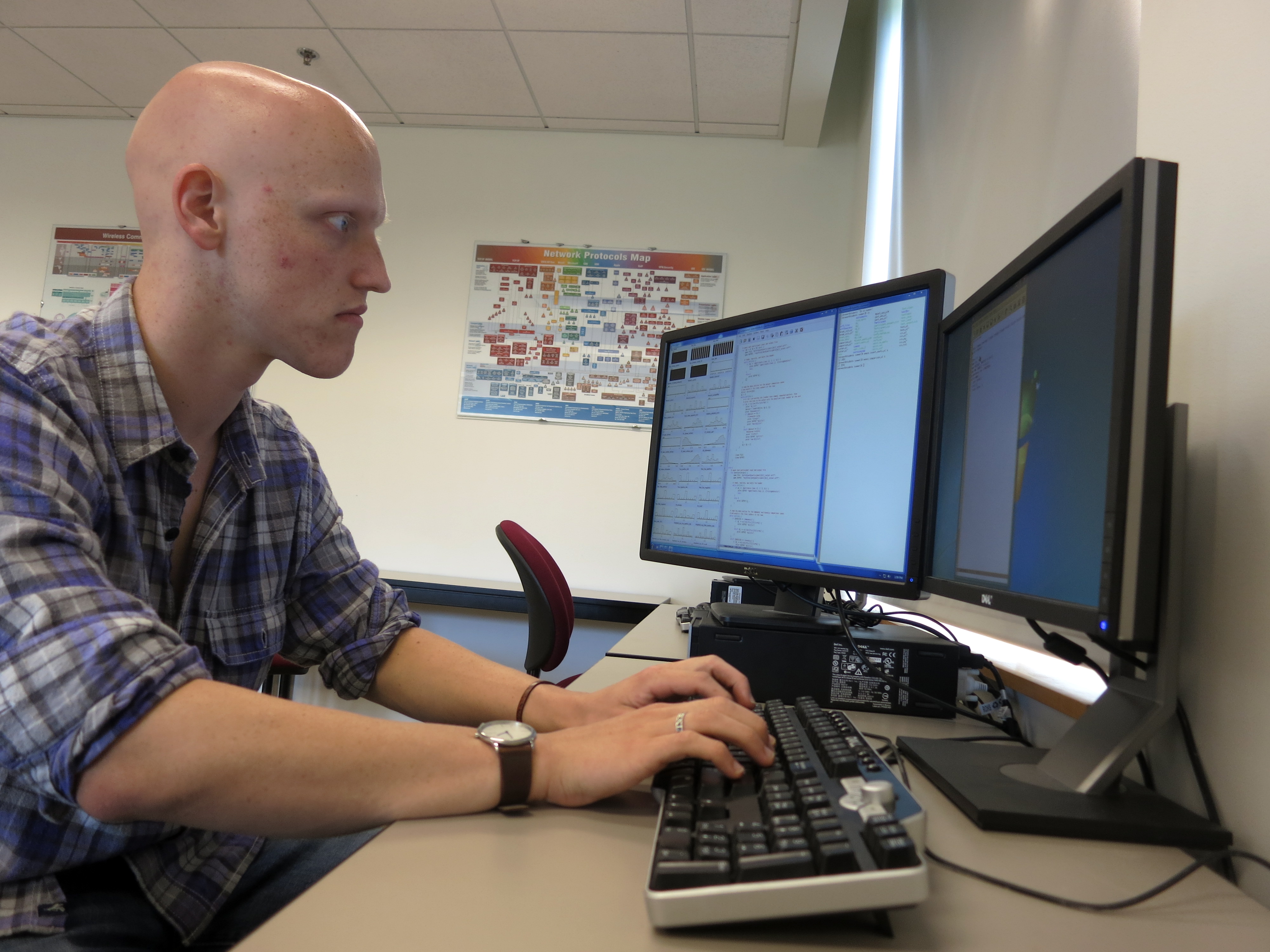
Recent studies have found that the average American lies 11 times a week. It is, of course, possible to tell a lie that goes undetected or, alternatively, to be accused of lying when innocent. With the help of Stuart Hirshfield, the Stephen Harper Kirner Professor of Computer Sciences, Nick Brewer ’14 is researching how well people detect lies and accept truths.
The beginning of Brewer’s research focused on psychology and neuroscience topics. He examined the demeanor bias in humans, the tendency to trust people who possess certain stereotypical physical characteristics and personal traits. These attributes include being coordinated, well-dressed, well-spoken and appearing sincere. He studied results from additional psychological studies on why we trust some people more than others and how accurate we are in our judgments.
Participants in Brewer’s experiment watched 40 short videos of people telling truths and lies.
These videos were acquired from a previous study performed by Timothy Levine, a Michigan State University professor. In the clips, some people were honest and admitted when they had lied or had been truthful, while others were dishonest about their behavior.
Participants, not knowing if the speakers were being truthful or lying, had to speculate depending on the person’s appearance and body language. After performing the study, Brewer concluded “people are really bad at lie detection.”
On average, people in the study were able to correctly identify if someone was lying slightly more than 50 percent of the time. Even if participants thought they had made informed decisions, their choices were marginally better than a guess.
One result from Levine’s original study is that professionals trained in lie detection are only correct about someone lying or telling the truth 60 percent of the time. According to Brewer, this result is “still far from optimal, and it shows how influenced people can be by others’ appearances and demeanor.”
Brewer did not expect people’s lie detecting abilities to “be almost no better than if we just flipped a coin to make the decision,” but it has piqued his interest in performing further research and answering additional questions about our propensity to trust others.
To visualize what happens in our brains when making decisions about lying and truth telling, Brewer used a functional near infrared spectroscopy (fNIRS) device. This measures blood flow through the dorsal prefrontal cortex, a section of the brain assumed to be associated with social judgment.
He believes that any advancement in understanding how our brains judge people and process decisions can help us better detect lies, which is what he hopes to accomplish through his study. “Best case scenario, we identify things that our brains find but we don’t consciously notice in our judgment process,” Brewer explained.
Different readings from the fNIRS device could lead to discoveries in why some people are better at detecting lies than others. For example, if many participants accepted a lie as a truth after watching a video clip, Brewer could search for similar patterns in brain activity. If a consistent pattern exists, he could find what behavior or stimulus is inducing the activity.
Brewer is passionate about music, computer science and art and said, “I need all of them in my life after college.” He is interested in pursuing a career with video game development, in which he can continue strengthening his computer science skills while contributing music and concept art to new games.
Brewer is a graduate of Catalina Foothills High School (Tucson, Ariz.).
Posted August 25, 2013
